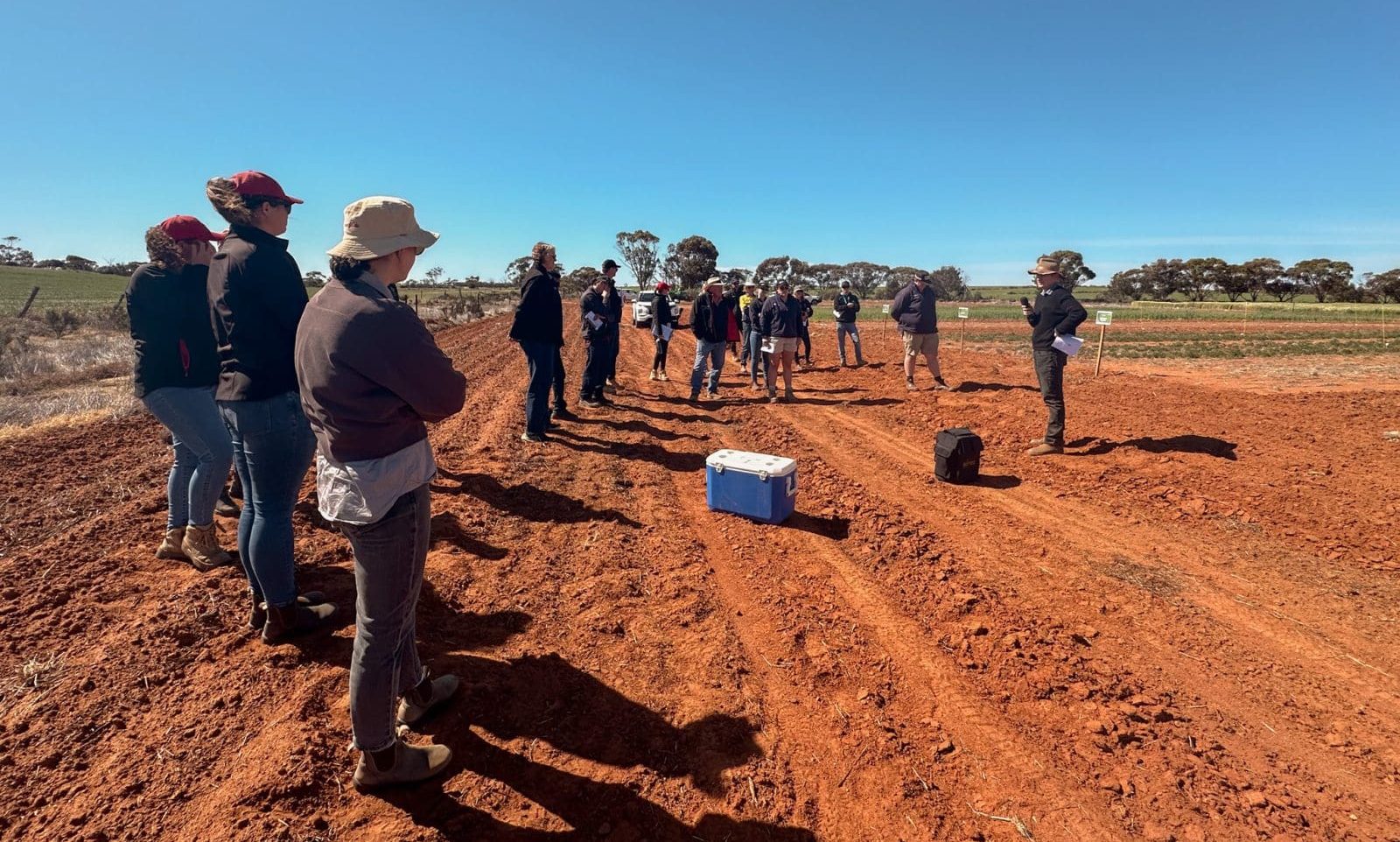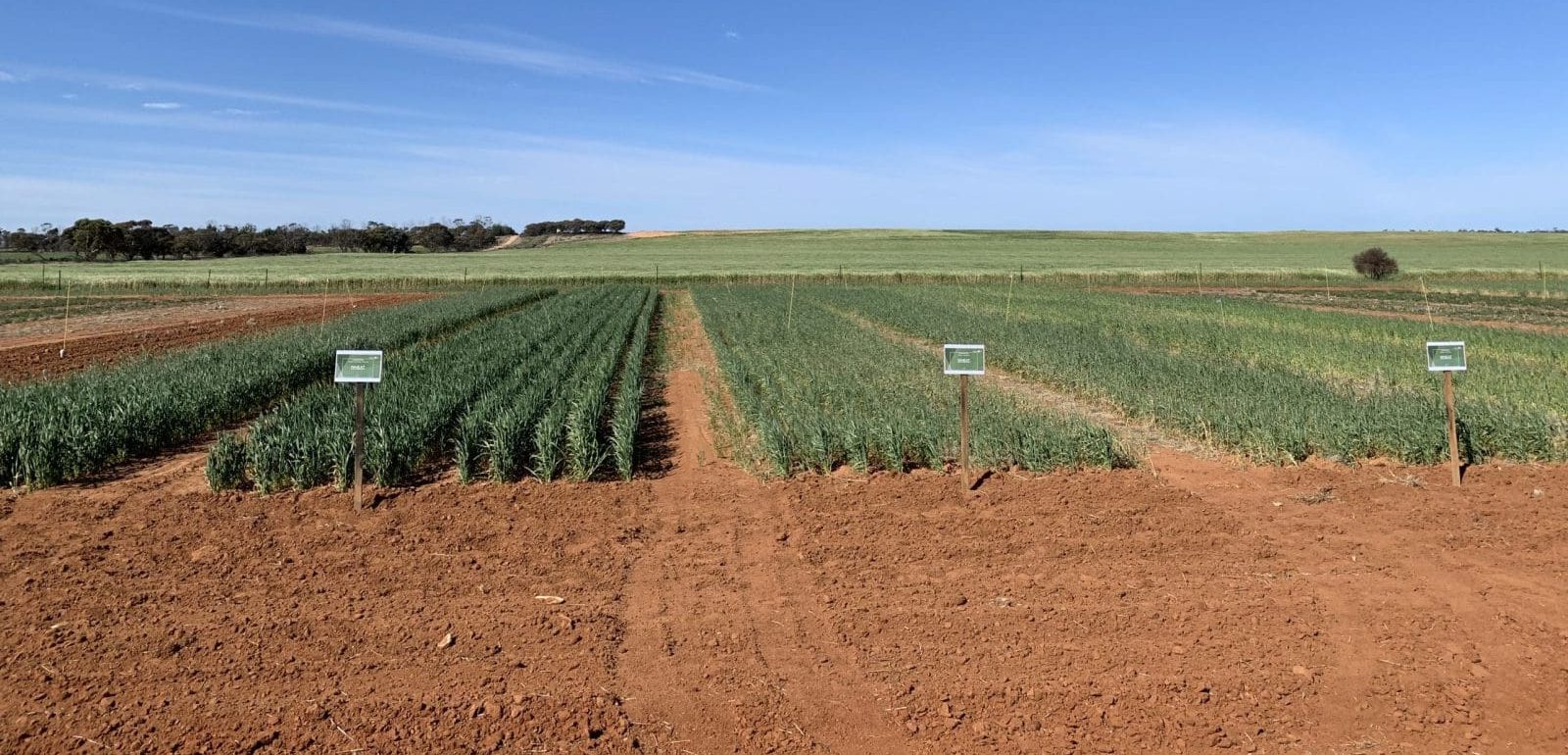
A recent Northern Mallee crop walk held at the long-running Agriculture Victoria MC14 trial site at Walpeup in the Mallee. Photo: Jess Bidstrup, Birchip Cropping Group
AGRICULTURE Victoria’s long-term cropping research in the Victorian Mallee is unearthing important results which could impact agricultural land management in the region.
Agriculture Victoria senior research scientist Roger Armstrong said the MC14 research trial, established at Walpeup in 1985, looks at the impact of different types of crop management on soil carbon (C) and nitrogen (N) stocks.
Professor Armstrong said the research has been testing three different crop-rotation treatments – legume/wheat, legume/fallow/wheat, and fallow/wheat – using mechanical cultivation or direct-drilling stubble-management practices.
“The standout treatment was the legume/fallow/wheat in terms of the significant productivity benefits of additional moisture and nitrogen added to the subsequent crop,” Prof Armstrong said.
“However, this needs to be balanced with the finding of nitrate leaching, as well as a reduction in the accumulation of soil carbon compared to the other continuous rotations.”
Prof Armstrong said in the early years of the trial, the legume in the rotation was medic, a low-growing clover-like annual, which in keeping with modern farming practices has been replaced by vetch.
“Cropping farmers know that adding a legume into the rotation increases N in the soil.
“When an annual-legume phase is included in the rotation, we have recorded not only good grain yield responses but also large amounts of soil nitrate, a valuable commodity in the low-rainfall Mallee cropping zone.”
“Most notably, the amount of soil nitrate is greater in the crop rotations that exclude a fallow period.”

The MC14 trial site at Walpeup in Victoria’s Northern Mallee region has examined the traits of wheat, fallow, and a legume grown in rotations over many years. Photo: Prof Roger Armstrong
Prof Armstrong said the legume/wheat treatment has increased N in the soil by 21 percent compared to the legume/fallow/wheat treatment, which recorded 15pc more N in the soil.
“Another critical observation from the long-term trial is that fallowing, as opposed to maintaining continuous plant cover, resulted in a decline in soil carbon.”
He said the results suggest that while fallowing can produce short-term benefits to productivity in terms of soil water and mineral N accumulation, it comes at the expense of a critical soil resource, organic carbon.
The study also highlights the value of trials such as MC14 in assessing the impact of different management practices on long-term productivity and agricultural sustainability.
Prof Armstrong said adopting a direct-drilling approach can help minimise the reduction in soil carbon, but it will not completely stop its decline.
Source: Agriculture Victoria

HAVE YOUR SAY